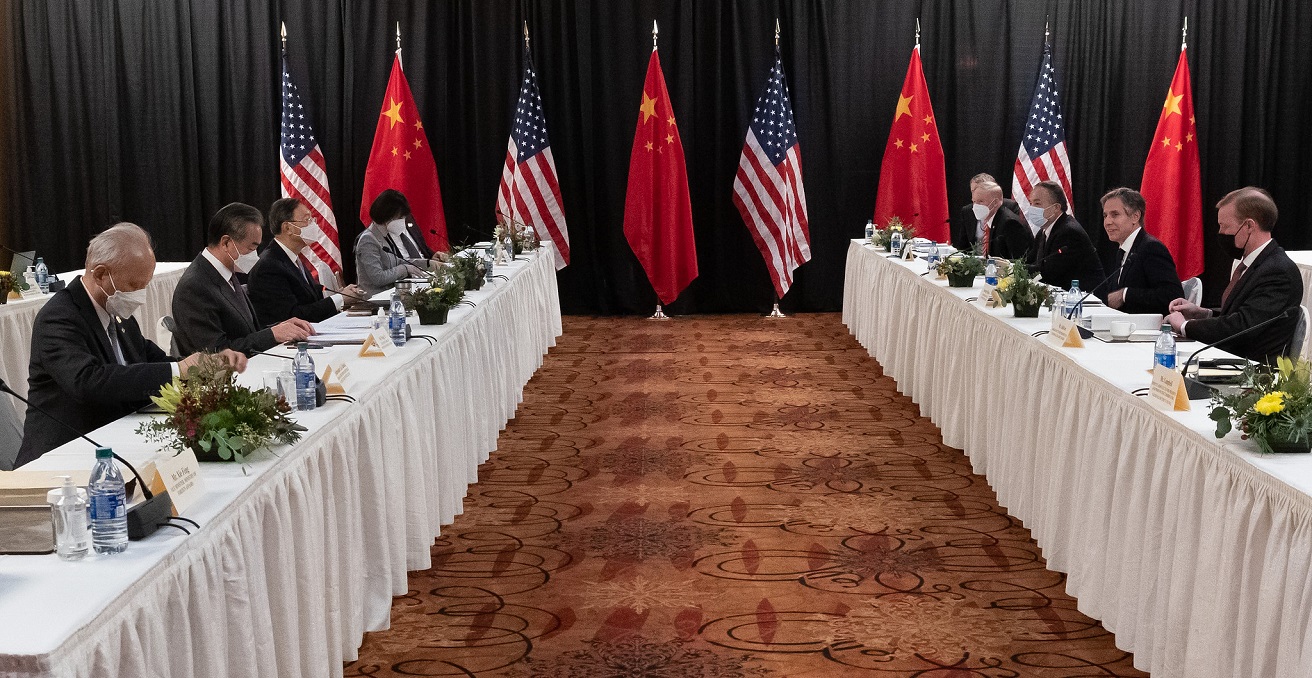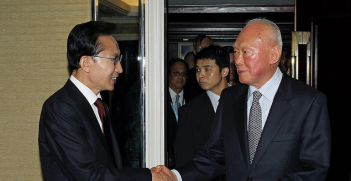A Report Card for the Anchorage Meeting: Both Sides Give Themselves a Passing Grade

The March 2021 Sino-American meeting in Alaska may appear as nothing more than a chance for both countries to air their grievances. However, both countries would have reason to give themselves a passing grade.
First, the United States invited representatives from the Chinese government onto American territory, demonstrating that it would be proactive in how it manages US-China relations. The Biden administration also made strong statements that sought Chinese action on military and human rights issues, dispelling the perception that it would take a more conciliatory approach than its predecessor. At the same time, however, American representatives did not spend much time on dealing with tariff disputes, and they expressed their hope that they could find room for collaboration with China on climate change and other issues. Both of these policy choices were meant to mark significant changes from the Trump administration. Before the Alaska meeting, the US also held 2+2 visits with Japan and South Korea, gathering information from both of its allies and building a consensus on how to proceed with the Anchorage meeting. Through such actions, the Biden administration was able to demonstrate that it views its relationships with America’s allies as important.
When it comes to China’s position at the Anchorage meeting, the fact that Chinese representatives made the trip to Alaska was itself meant to show that the country is serious about improving relations with the United States. In order to claim that the confrontation between the two countries arose because of moves made by the US—rather than anything the Chinese side may have done—China had to show that it was enthusiastic about the possibility for dialogue. China also succeeded in making a public show of its hardline approach to the negotiations, with one of China’s representatives drastically exceeding the set time limit for his opening statement in order to expound upon China’s diplomatic positions. Such an approach was likely a response to domestic observers in China who were calling for the diplomats to avoid any sort of compromise with the United States and other Western powers.
Also relevant is the fact that a number of key political events are set to take place over the next several years, including the celebration of the hundredth anniversary of the founding of the Communist Party of China in 2021 and the extension of Xi Jinping’s term as the Party’s general secretary and as president in 2022 and 2023. As a result, the diplomats present at the Anchorage meeting had to avoid taking any actions that might be construed as causing harm to Xi’s administration. It was also important that China promise that it would continue talks with the US and that it would seek cooperation between the wo countries in select areas, demonstrating that the country was not willing to assume an entirely confrontational approach.
For the above reasons, even though nothing was necessarily decided at the meeting, both China and the US were able to achieve their desired results. We can therefore give both sides a passing grade in accordance with their own standards. However, new problems have emerged in the meeting’s wake.
Space does not allow me to list all of the problems China is now dealing with after the summit, but I would like to mention a few. Perhaps the most important issues relate to China’s recent call for a new form of great power relations, which was meant to coincide with the Biden administration’s inauguration. A part of this is a call for the United States to cooperate on climate change and other issues. But even though both sides’ positions have moved closer together on that front, conflicts over Taiwan, Hong Kong, Xinjiang, security guarantees, and sea lane access mean that the realisation of China’s vision for “New Great Power Relations” remains far off on the horizon. Areas where the two countries share a similar set of interests are largely limited to climate change, North Korea, and Iran. The Chinese government will now seek to probe precisely what sort of cooperation is possible in such areas, offering its own policy proposals in response. This process, however, will not at all be easy.
Furthermore, China will also have to adjust the basic principles that underlie its foreign policy in light of the current state of US-China relations. Different from the US, China does not have any allies of its own. The US has placed a high degree of importance on its alliances as it seeks to chart a course for its foreign policy. While the Chinese government has severely criticised such moves as constituting an anti-China encirclement, it will also possibly seek to change its current diplomatic stance, moving away from its completely independent foreign policy and perhaps forging new alliances. Regardless, after taking a particularly hardline approach towards the United States during the Alaska summit, China’s government will have to develop its foreign policy in a way that it can successfully explain to a domestic audience as being an extension of its current diplomatic moves. Consequently, China may find itself constrained by its own propaganda messages and by the statements the country’s diplomats have already made on the world stage.
KAWASHIMA Shin is a Professor in the Department of International Relations at the Graduate School of Arts & Sciences at the University of Tokyo.
This article was translated from Japanese to English by George Lemisovsky.
This article is published under a Creative Commons License and may be republished with attribution.




